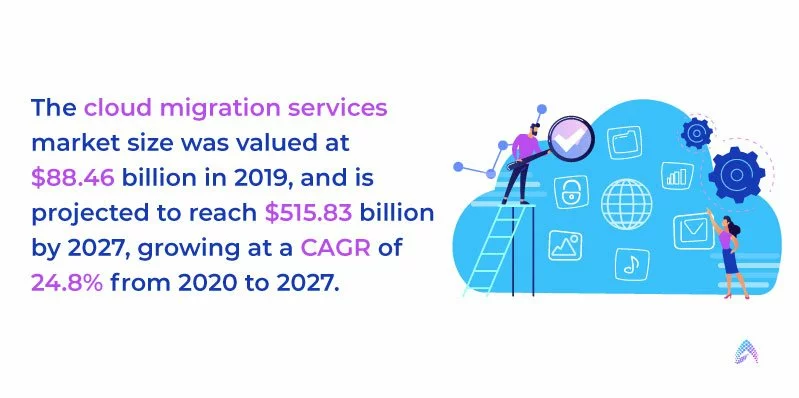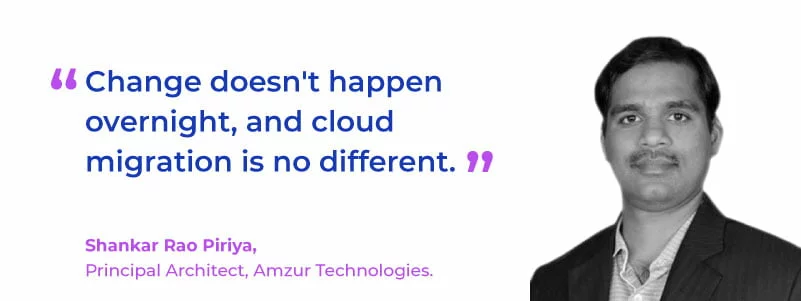Top 6 Rs of Cloud Application Migration Strategy: Optimize Time and Budget

When you are thinking about adopting cloud migration strategies, it is always helpful to review the basics to learn and clarify what you want to achieve. For example, in the current digital era, the maintenance of legacy applications will directly impact your company’s financial and growth opportunities.
However, when you are ready to move your business applications to the cloud, not every application needs migration. A few of them might require changes in their base code, while others might need to be retained as-is as legacy programs. To help explain this more, we’ve compiled the top 6 Rs of cloud application migration strategy in this blog.
What are the top 4 questions to ask before cloud migration?
- Which applications and resources are you currently using?
- How could you benefit from cloud migration?
- Which elements could stand to benefit from migration, and which either cannot be ported or would perform better on your legacy infrastructure?
- What is the cost of your current infrastructure, including physical servers and the management of shared resources?

6 R’s of Cloud Application Migration Strategy:
Migrating a business to the cloud is not just about replacing an application or some software. It is a collaborative approach that requires mapping between existing applications, cloud applications and infrastructure.
A cloud migration strategy can include:
- Migrating an application from on-premises to cloud.
- Migrating database from an on-premises server to cloud server.
- Migrating applications from the public to private cloud and vice versa.
- Migrating applications from one cloud service provider to another.
However, not every application needs migration or development of code from scratch. It is normally your call to decide what should go first to the cloud, but your cloud application migration strategy should include an in-depth analysis that finds your real needs and ultimately saves time and cost. If it doesn’t do those things, what is the point of migrating?
Here are the 6 R’s that enable a deep understanding of the cloud migration process.
1. Retire:
An organization uses numerous applications developed using diversified technologies. A thorough analysis and identification of your needs will help you identify applications that won’t be required in the future. If you learn you have such applications, you can retire them to save time and cost of migration.
2. Retain:
While developing a cloud application migration strategy, it is crucial to identify applications that should remain on-premises. Since businesses are actively leveraging hybrid cloud solutions, they usually maintain a few of their applications as-is.
Also, some applications do not contribute any extra value by undergoing migration. So, what is the point of migrating them? In this scenario, it is recommended to retain those applications as-is.
3. Rehost:
Rehosting is one of the most basic cloud application migration strategies. We call this the “lift and shift” method. In this method, organizations find what needs to shift from on-premises to the cloud, and then follow necessary steps to migrate their applications, data, and infrastructure as-is.
The cloud migration solutions provider now manages the underlying hardware and hypervisor infrastructure, and companies utilize the same applications and infrastructure on a subscription basis. Once their applications and infrastructure are on the cloud, it will become easy to optimize or re-architect them further.
4. Re-platform:
Compatibility is a factor that must be considered in order to establish seamless integration between legacy IT systems and modern cloud solutions. What if you have a legacy IT infrastructure that runs on obsolete operating systems and is no longer supportable? Then you must change its platform to make it compatible while maintaining its core application as-is.
Including re-platforming in your cloud migration strategy ensures your legacy IT system’s underlying architecture will remain the same while its platform is migrating to the cloud.
5. Re-architect or Re-factor:
This is the most advanced process in cloud migration strategy. Rearchitect/ Refactor focuses on transforming server-based applications to serverless applications, allowing them to achieve agility and scalability. Many businesses choose either to rehost or to re-platform to get some momentum out of the cloud migration process and later refactor to make applications cloud-native.
Re-factoring or re-architecting boosts overall productivity, collaboration, agility, and business continuity.
6. Re-purchase:
With the advent of cloud solutions, many applications and services are available in the SaaS model. If you Re-purchase, you will be replacing applications that run on your infrastructure with SaaS applications, or in other words, simply replacing a product from one vendor with another vendor.
In other words, it improves migration speed and replaces legacy applications with SaaS applications.
Conclusion:

The 6 Rs of cloud transformation will help you prioritize your needs and optimize your budgets. A customized cloud migration strategy can also eliminate the hiccups in your decision-making process and bring innovation.
Deciding on a cloud migration strategy requires in-depth knowledge of cloud technology and resources to make the process seamless. At Amzur Technologies, we have over 15 years of experience in delivering cloud migration services and solutions for startups and SMEs in Tampa, Florida, and the rest of the USA.
Want to know more about how to make the cloud migration process easy and rationalize your business growth?




